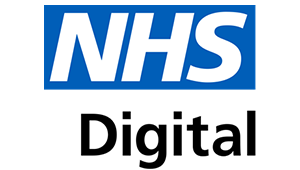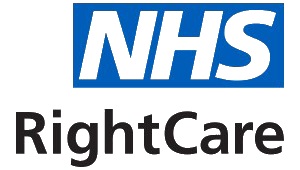Commissioners play an important role in the planning and implementation of Nf2f models of care.
Whether you’re planning a pilot or a wider implementation of your project, engaging with commissioners early on will support a collaborative approach. Additionally, commissioners can support your Nf2f projects financially by commissioning these new models of care. This could be via recurrent funding, or through integrating Nf2f models into integrated care pathways and systems.

How can we engage with commissioners?
To find out who your local commissioners are, contact the clinical commissioning group (CCG) directly or speak with your contracting team to identify a contact.
Additionally, you may wish to consider relevant contacts within the Sustainability and Transformation Partnerships (STP). They develop plans and priorities across wider geographical areas in close collaboration with CCGs.
The stakeholder mapping exercise in the planning section can also help identify who could support you in engaging with these key stakeholders.
Understanding your local priorities, in addition to the national and local drivers, will support your case for change and the conversation with local commissioners. Consider identifying key local priorities and demonstrating the ability of an Nf2f model to provide a solution to these needs – tailor your offer to suit the requirements of the local population.
Where can we find out about local priorities?

CCG |

STP |
| Local priorities can be found on CCG websites here. | STP priorities are set out on the STP websites that can be found here. |
Most CCGs and STPs have aligned their priorities – or are in the process of doing so. When reviewing both CCG and STP priorities and plans, there should be a similarity and golden thread across geographical areas.
How do we take a local priority and show that an Nf2f model can help?
The most effective way to explain how to take a local priority – and show that Nf2f can help – is to review a real-world example.
Let’s look at the Camden CCG, which is part of the North London Partners STP.
By examining the local priorities available here, we can identify a number of key areas where Nf2f can be part of the solution:
Vision
Camden CCG’s vision includes:
- Delivering joined-up care, closer to home.
- More care provided within the community.
- Primary care and community services working together.
Priorities
They have also set a number of priorities, including:
Priority 1 – developing and implementing a primary and community delivery plan which sets out key objectives to achieve integrated care in the community.
Priority 3 – proactive and reactive care closer to home through primary care providers working with community and secondary care services.
Priority 4 – working with providers to redesign traditional hospital based outpatient pathways to reduce demand and improve waiting times.
Initiatives
The Camden Local Care Strategy is a five-year plan in which all key health and care organisations have agreed a single model of care for the future delivery of health and care services in the area. This includes a number of initiatives where Nf2f clinic models could be implemented, including:
- Planned care – Reviewing areas of planned care across North Central London to ensure patients receive the same standard of care that is as streamlined and effective as possible. This includes looking at whether some parts of this care would be better if delivered in settings other than a hospital.
- Integrated care teams – Offering patients more integrated, holistic, person-centred and community-based care.
Now let’s look at the priorities for North London Partners STP.
In the summary, you’ll see there’s a primary aim to reduce overall admissions and outpatient appointments. You can also identify the following points as suitable targets for Nf2f implementations:

Moving care closer to home and reducing the need for people to go to hospital – developing better local links between hospitals and other services.

Harnessing the power of technology to support people to be healthy and well.
As you’ll see from this example, the priorities and plans set out by Camden CCG and North London Partners STP align with the aims and objectives of Nf2f models. This can support you in discussions with commissioners.
Are there ways to further strengthen the case for Nf2f clinics?
Supporting your narrative with local population, activity and cost data strengthens the case even further. For example, the prevalence of Chronic Kidney Disease (CKD) is rising in the general population. Consequently, there is a risk of significant impact on primary and secondary care.
It can be helpful to demonstrate the predicted growth of prevalence within the local area. This would provide further justification for an alternative Nf2f outpatient model.
If possible, compare costs and activity between the current and new model of care or pathway. For example:
- How much time will consultants spend reviewing each CKD case?
- How is this model expected to impact the size of outpatient waiting lists?
Where can we find data to support our narrative?
There’s a few key sources of data below that you can use to support your narrative. This list is not exhaustive – you should also consider any other data you have access to:
Population level data:

Public Health England fingertips |

Hospital Episode Statistics Data |

Rightcare |
| Includes profiles with a rich source of indicators across a range of health and wellbeing themes. It’s been designed to support the understanding of local health need and commissioning to improve health and wellbeing, and reduce inequalities. | A database containing details of all admissions, A&E attendances and outpatient appointments at NHS hospitals in England. | Data that allows local health systems to consider information from across patient pathways to identify the greatest potential improvements in spend and outcomes. |

Tasks
- Review the priorities at your local CCG and STP.
- Having identified a priority, think about how you could provide a solution by using an Nf2f implementation.
- You can download the below document and make a note of the priorities and solutions.
Now that you’ve thought about the local priorities in your area, watch the following video on the experiences of others as they interact with commissioners.
Based on these experiences, we’ve created a set of top tips on how to engage with a commissioner. You can download this document below.
Have any tariffs been set nationally that can support further conversations with commissioners regarding funding for Nf2f models?
To incentivise the use of new delivery models for follow-up appointments, increased use of Nf2f appointments or wider adoption of technology, NHS Improvement (NHSI) encourages providers and commissioners to agree local prices. For Nf2f activity, this happens at the treatment function code level. Many Nf2f models have taken this approach and agreed either block contracts or activity related prices.
NHSI have set non-mandatory prices for Nf2f and non-consultant-led activity. The Nf2f prices are based on reference cost data. This is calculated by averaging the cost of all consultant-led Nf2f follow-up attendances, compared with face-to-face attendance. NHSI calculated that the average cost of Nf2f is 68% of the average expense of face-to-face consultations.
These prices do not reflect the individual requirements of each model and they are non-mandatory. Therefore, it’s recommended that providers have an open conversation with commissioners to ensure that delivering an Nf2f model does not lead to a financial disadvantage for the provider.
To avoid having to disincentivise Nf2f clinics financially, you may consider discussing and agreeing how to incentivise the Nf2f models. For example, you could consider matching f2f tariffs for an initial period, as a way of pump priming Nf2f models and the related initial start-up costs.